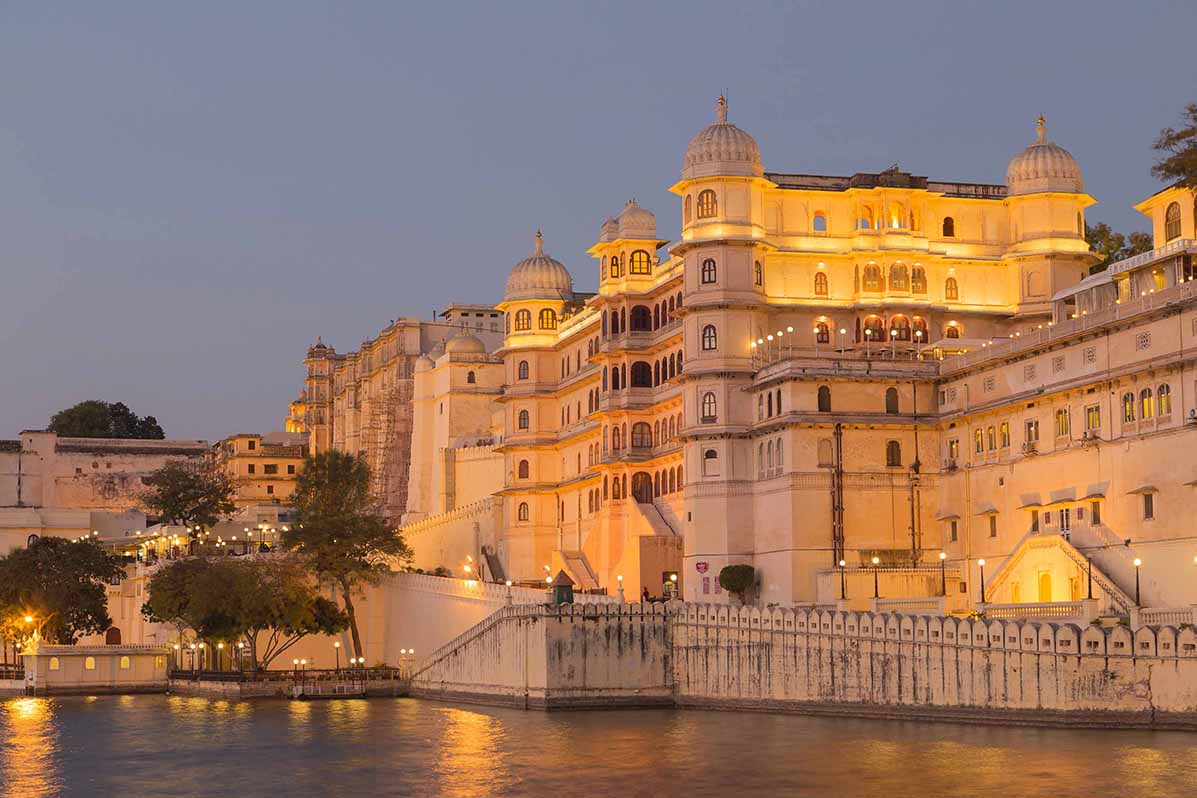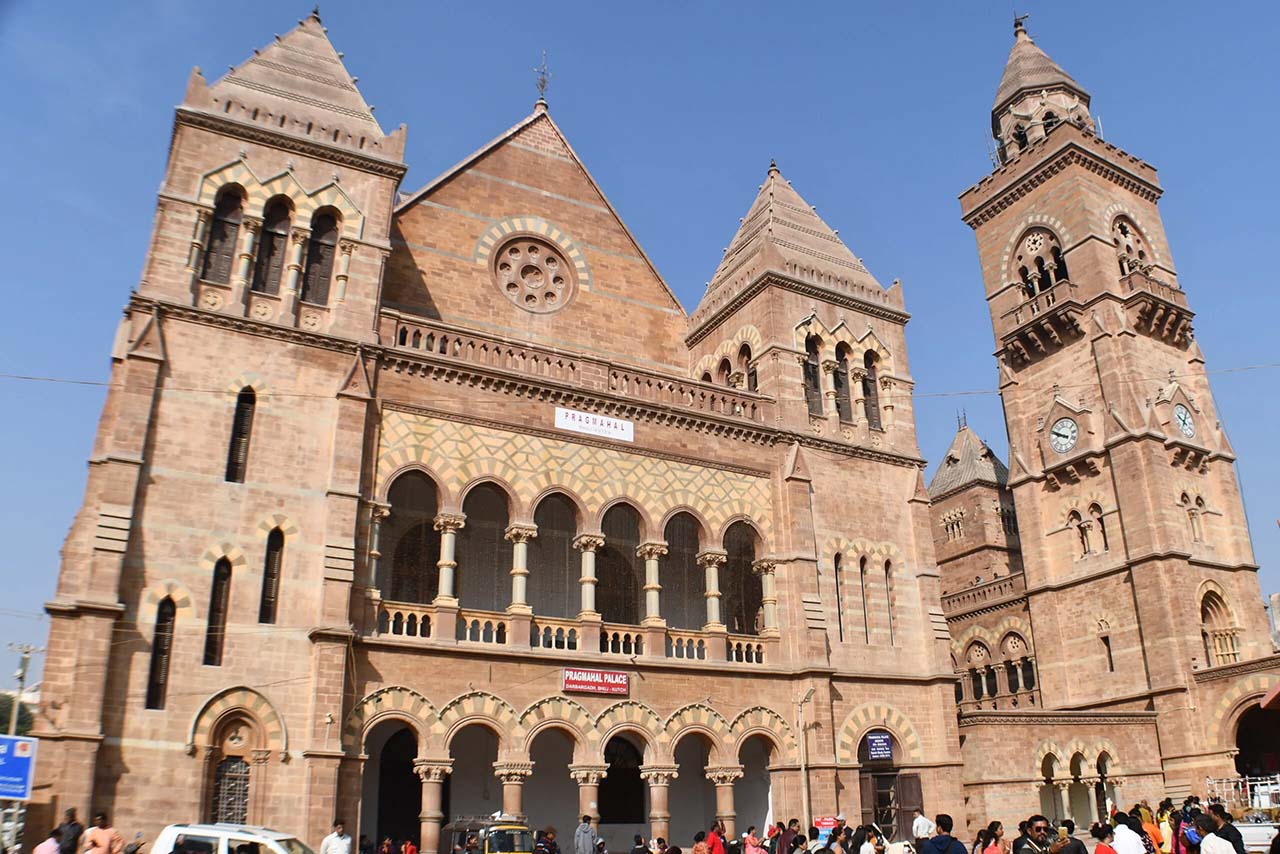Jawai
Famous For
Leopard
Other Attraction
Temple, forts and culture
Peak Time
December – February
Best Time To Go
October – March
Nestled in the Pali district of Rajasthan, Jawai Hills is surrounded by the picturesque Jawai Bandh (Reservoir), expansive grasslands, riverbeds, and grazing grounds. Shaped by ancient lava flows, the natural caves and rock shelters in Jawai Hills now serve as the habitat for leopards and provides a rare opportunity to witness these majestic predators in their natural habitat.
The granite hills of Jawai showcase a unique spectacle of leopards living together like a family, often seen near temple stairs during the evening. Jawai boasts the highest density of leopards in India, challenging the perception that leopards are solitary creatures. The leopards of Jawai Hills exhibit extraordinary behaviour, coexisting peacefully with both each other and the local human population.
Leopards and Shepherds
Tours to Jawai & Beyond
Things To Do
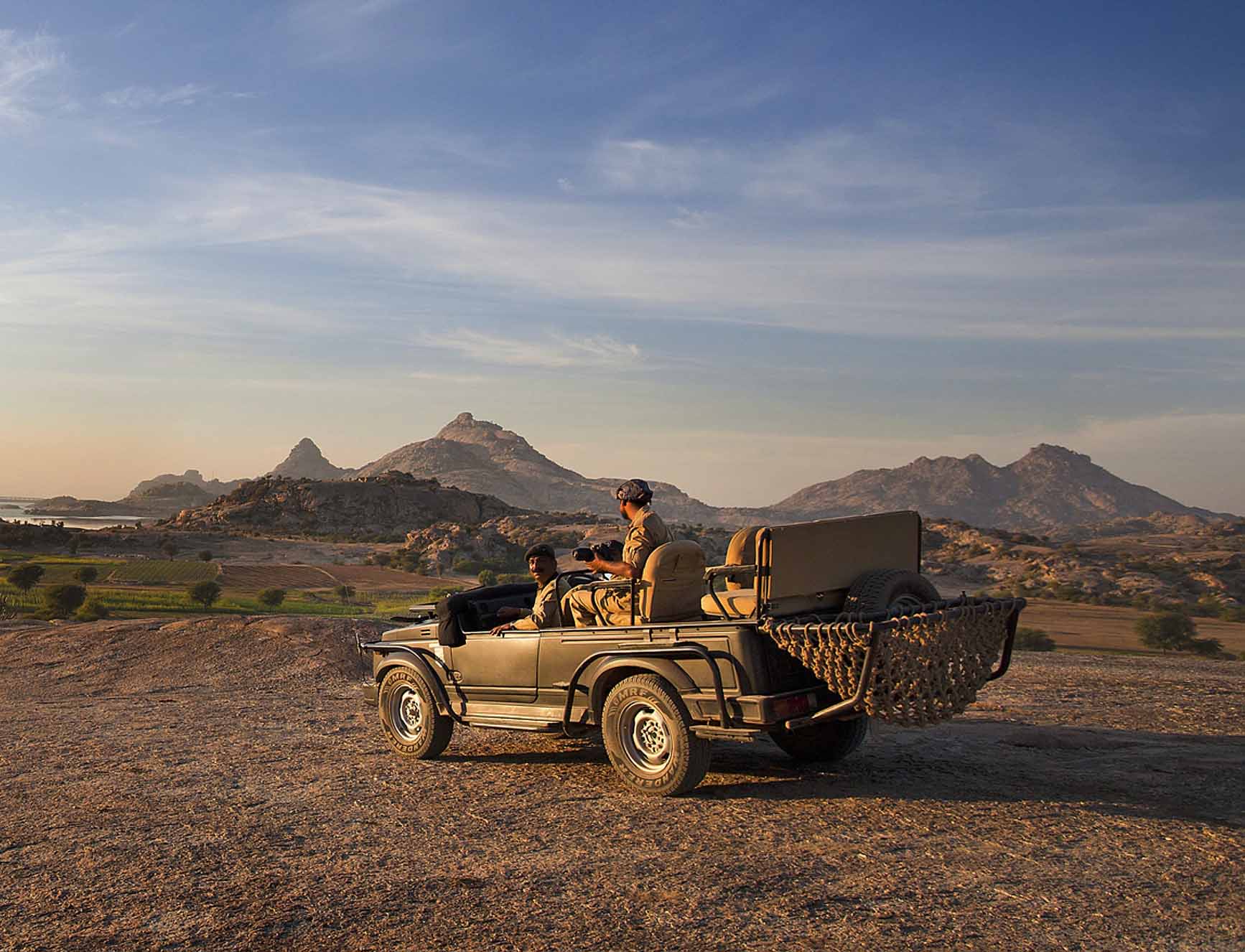
Leopard safari
Leopards are the main attraction in Jawai, where sightings of these elusive big cats are a thrilling highlight. The region’s dramatic hills, formed by ancient lava flows, provide numerous natural caves, creating an ideal habitat for leopards. Thanks to their high density, spotting them is relatively easy. Spending around three days in Jawai and taking 2 to 3 leopard safaris significantly increases your chances of encountering these beautiful cats.
Safaris are conducted in open 4×4 vehicles in the morning and late afternoon. Knowledgeable drivers, familiar with the terrain and leopard hotspots, enhance your chances of a successful sighting. In addition to leopards, you can also spot hyenas, sloth bears, crocodiles and nilgai, making Jawai a diverse and exciting wildlife destination.
Birding & crocodile spotting at the Jawai Dam
Built across the Jawai River, a tributary of the Luni, the Jawai Dam offers stunning views of the river. Construction began on May 12, 1946, and was completed in 1957. As the largest dam in western Rajasthan, it spans a total area of 102,315 acres.
The shallow waters of the Jawai Dam attract thousands of birds, forming a significant part of the crocodile’s diet. Crocodiles are often seen basking and hunting along the riverbanks.
Jawai provides an exceptional bird-watching experience, especially between October and March, when it becomes a temporary haven for migratory birds. During this time, you can observe a wide variety of species, including bar-headed geese, sarus cranes, common eastern cranes, knob-billed ducks, demoiselle cranes, Indian spot-billed ducks, and flamingos.
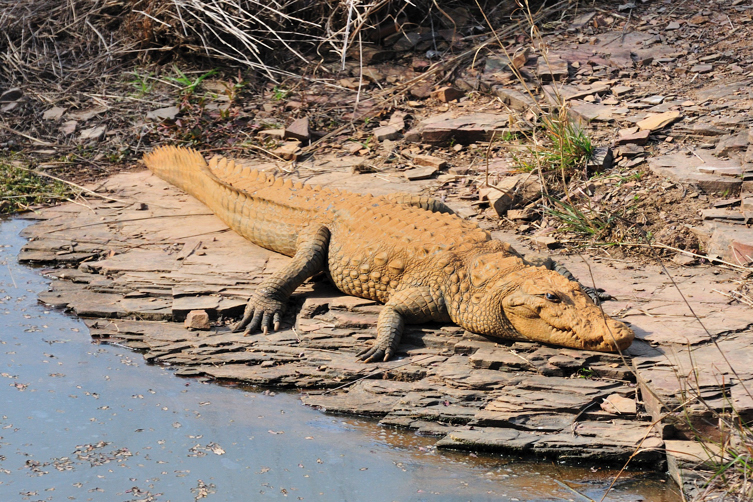

Visiting Rabari village
The native people of Jawai are the Rabari tribes, who sustain themselves through cattle rearing and farming. Rabaris, also known as ‘Rewari’ locally, is an interesting indigenous tribe prevalent in this region. They can be easily distinguished by their unique dress code. The men wear big colourful red turbans and white kurta pajamas. The women of the tribe wear bangles covering their entire arms and silver anklets.
Visiting Rabari villages offers a unique insight into their way of life. It’s an unforgettable excursion, allowing you to experience their daily routines and cultural practices firsthand. You’ll have the opportunity to observe their lives up close, gaining a deeper appreciation for their enduring traditions and community spirit.
The most important festival for them is Holi and they start preparations several days in advance. The main way of celebration is to decorate their animals and colour their horns.
Ranakpur temple
Ranakpur Temple, located an hour’s drive from Jawai, is a stunning example of Jain architecture. This majestic temple complex, dedicated to Tirthankara Adinatha, is renowned for its intricate marble carvings and expansive layout, making it one of the most majestic Jain temples in India. Built in the 15th century, its intricate sculptures, detailed engravings, and delicate motifs showcase the artistic excellence of the period. The temple complex features 1,444 uniquely carved pillars, each one different from the others, creating a mesmerizing labyrinth of stone artistry.

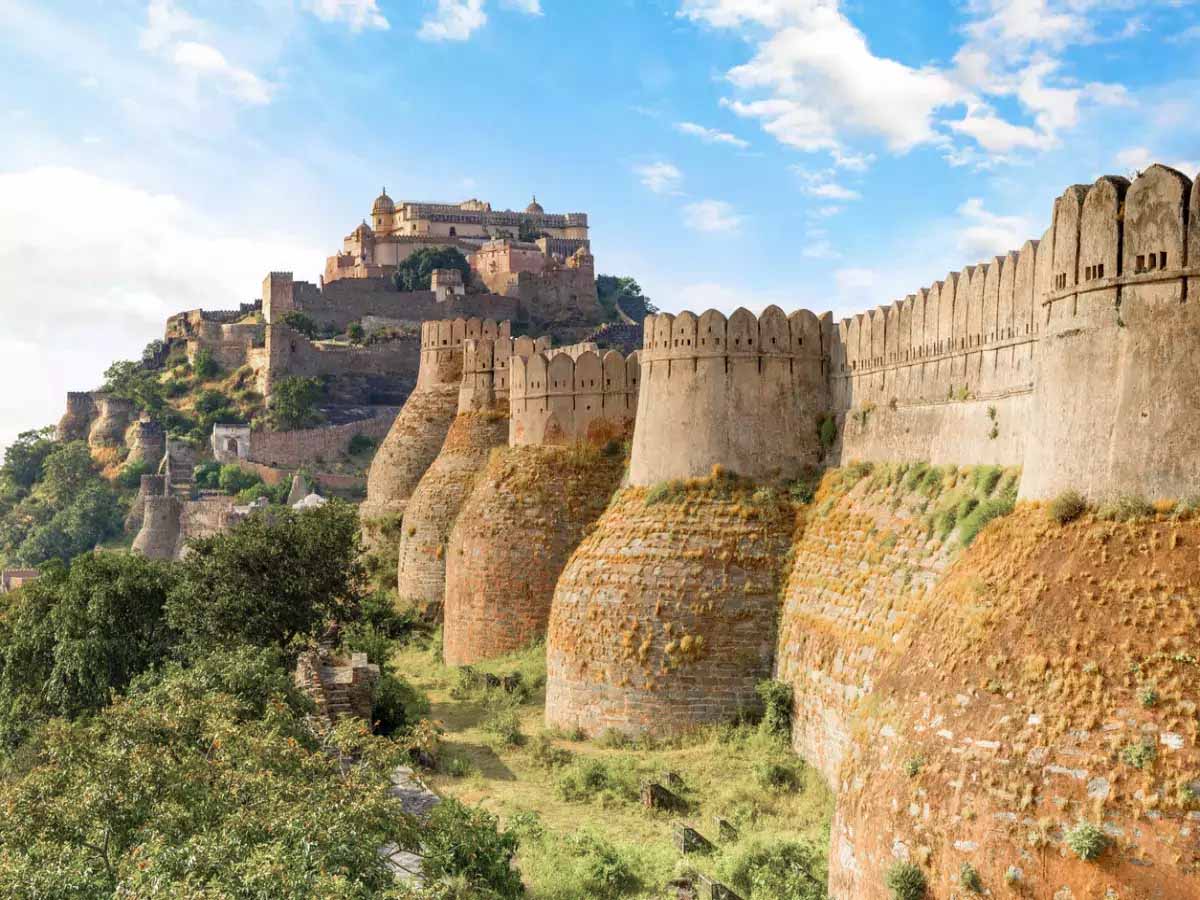
Kumbhalgarh fort
Not far from Jawai lies a UNESCO World Heritage Site of Kumbhalgarh fort. It is an awe-inspiring symbol of medieval military architecture and heritage. Built in the 15th century, this massive fort is renowned for its formidable defences and historical significance. Perched atop the Aravalli Hills, Kumbhalgarh Fort boasts the second-longest continuous wall in the world, after the Great Wall of China, stretching over 36 kilometers. The fort’s walls are thick enough to accommodate eight horses abreast and feature bastions and watchtowers that offer panoramic views of the surrounding landscape. Inside the fort, you can explore a plethora of ancient structures, including palaces, temples, and step-wells. The most notable among them is the Badal Mahal, or Palace of Clouds, which offers stunning vistas from its lofty perch.
Best time to visit
Leopards can be spotted throughout the year. The fact stays correct because of the terrain that makes the big cats come out on the hills. However, most people prefer to travel during October and March when the weather is comfortable. During October and November The surrounding hills and landscapes are lush and green after the monsoon, providing a picturesque backdrop for safaris and nature walks. Months from December to February is winter when temperature is between 10°C to 25°C. Migratory birds flock to Jawai during winter months, offering a fantastic bird-watching experience.
It’s summer time in Jawai with the temperatures rising significantly, reaching up to 40°C during peak summer days in May. Safaris are characterized by the arid beauty of the landscape and incredible wildlife sightings. During this time, the leopards of Jawai are often easier to spot as they gather around the dwindling water sources. The fewer tourists mean you can enjoy the tranquility and raw beauty of the region without the crowds. Early morning and late afternoon safaris provide the best opportunities to witness the wildlife in action, from leopards to various resident birds.
Visiting Jawai between July and September offers a refreshing and unique experience as the monsoon transforms the landscape into a lush, green haven. The rains rejuvenate the arid terrain, turning it into a vibrant, green landscape with blooming flora. The monsoon brings relief from the summer heat, with temperatures dropping to a more comfortable range, making outdoor activities more enjoyable. While leopards and other wildlife might be more dispersed due to the abundance of water sources, patient and keen-eyed visitors can still spot these elusive creatures, especially during breaks in the rain.


